Related Research Articles
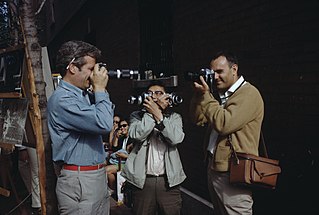
Photography is the art, application, and practice of creating durable images by recording light, either electronically by means of an image sensor, or chemically by means of a light-sensitive material such as photographic film. It is employed in many fields of science, manufacturing, and business, as well as its more direct uses for art, film and video production, recreational purposes, hobby, and mass communication.
Pure photography or straight photography refers to photography that attempts to depict a scene or subject in sharp focus and detail, in accordance with the qualities that distinguish photography from other visual media, particularly painting. Originating as early as 1904, the term was used by critic Sadakichi Hartmann in the magazine Camera Work, and later promoted by its editor, Alfred Stieglitz, as a more pure form of photography than Pictorialism. Once popularized by Stieglitz and other notable photographers, such as Paul Strand, it later became a hallmark of Western photographers, such as Edward Weston, Ansel Adams and others.

Ernst Haas was an Austrian-American photojournalist and color photographer. During his 40-year career, Haas bridged the gap between photojournalism and the use of photography as a medium for expression and creativity. In addition to his coverage of events around the globe after World War II, Haas was an early innovator in color photography. His images were disseminated by magazines like Life and Vogue and, in 1962, were the subject of the first single-artist exhibition of color photography at New York's Museum of Modern Art. He served as president of the cooperative Magnum Photos, and his book The Creation (1971) was one of the most successful photography books ever, selling 350,000 copies.
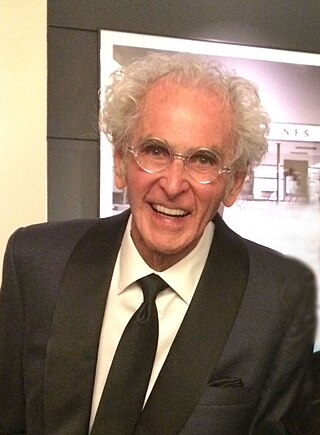
Jerry Norman Uelsmann was an American photographer.
Irving Penn was an American photographer known for his fashion photography, portraits, and still lifes. Penn's career included work at Vogue magazine, and independent advertising work for clients including Issey Miyake and Clinique. His work has been exhibited internationally and continues to inform the art of photography.

Art Kane was an American fashion and music photographer active from the 1950s through the early 1990s. He created many portraits of contemporary musicians, including Bob Dylan, Jefferson Airplane, Sonny and Cher, Aretha Franklin, Frank Zappa, Jim Morrison, Janis Joplin, the Rolling Stones, and The Who.

The history of photography began with the discovery of two critical principles: camera obscura image projection and the observation that some substances are visibly altered by exposure to light. There are no artifacts or descriptions that indicate any attempt to capture images with light sensitive materials prior to the 18th century.

Fine-art photography is photography created in line with the vision of the photographer as artist, using photography as a medium for creative expression. The goal of fine-art photography is to express an idea, a message, or an emotion. This stands in contrast to representational photography, such as photojournalism, which provides a documentary visual account of specific subjects and events, literally representing objective reality rather than the subjective intent of the photographer; and commercial photography, the primary focus of which is to advertise products, or services.
Documentary photography usually refers to a popular form of photography used to chronicle events or environments both significant and relevant to history and historical events as well as everyday life. It is typically undertaken as professional photojournalism, or real life reportage, but it may also be an amateur, artistic, or academic pursuit.

Alexey Vyacheslavovich Brodovitch was a Russian-born American photographer, designer and instructor who is most famous for his art direction of fashion magazine Harper's Bazaar from 1934 to 1958.
John Gossage is an American photographer, noted for his artist's books and other publications using his photographs to explore under-recognised elements of the urban environment such as abandoned tracts of land, debris and garbage, and graffiti, and themes of surveillance, memory and the relationship between architecture and power.
The following outline is provided as an overview of and topical guide to photography:
Ben Rose was an American photographer.

Herbert Matter was a Swiss-born American photographer and graphic designer known for his pioneering use of photomontage in commercial art. Matter's innovative and experimental work helped shape the vocabulary of 20th-century graphic design.
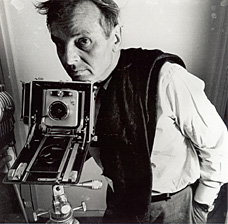
Hans Namuth was a German-born photographer. Namuth specialized in portraiture, photographing many artists, including abstract expressionist Jackson Pollock. His photos of Pollock at work in his studio increased Pollock's fame and recognition and led to a greater understanding of his work and techniques. Namuth used his outgoing personality and persistence to photograph many important artistic figures at work in their studios.
Nathan Louis "Nat" Finkelstein was an American photographer and photojournalist. Finkelstein studied photography under Alexey Brodovitch, the art director of Harper's Bazaar and worked as a photojournalist for the Black Star and PIX photo agencies, reporting primarily on the political developments of various subcultures in New York City in the 1960s. In 1964, Finkelstein entered Andy Warhol's Factory as a photojournalist and remained for three years; Finkelstein's photographs from this period are now regarded as some of the most iconic of the time.
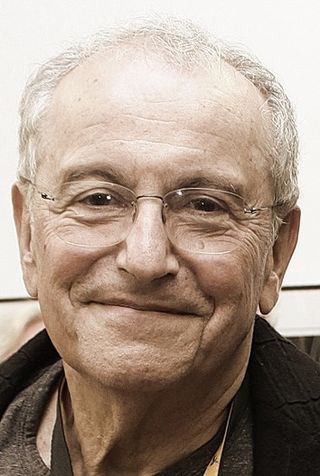
Ryszard Horowitz is a Polish-born American photographer recognized as a pioneer of special effects photography that predates digital imaging.
Willard "Herc" Detering Morgan was a photographer, writer, editor, and educator and the husband of photographer Barbara Morgan, known for her documentation of Martha Graham's dances.
David Attie was a prominent American photographer, widely published in magazines and books from the late 1950s until his passing in the 1980s. He was one of the last great proteges of legendary photography teacher and art director Alexey Brodovitch. Attie worked in a wide range of styles, illustrating everything from novels to magazine and album covers to subway posters, and taking now-iconic portraits of Truman Capote, Bobby Fischer, Lorraine Hansberry, and many others. He also created the first-ever visual depiction of Holly Golightly, the main character in Breakfast at Tiffany's, when he illustrated the Capote novella's first appearance in Esquire Magazine. He was best known in his lifetime for his signature photo montages—an approach he called "multiple-image photography": highly inventive, pre-Photoshop collages that he made by combining negatives in the darkroom. His work has received new attention with a pair of posthumous books: the well-reviewed 2015 publication of his Capote collaboration "Brooklyn: A Personal Memoir, With The Lost Photographs of David Attie," and the 2021 collection of his behind-the-scenes photographs from the very first season of Sesame Street, "The Unseen Photos of Street Gang." He has been the subject of several solo exhibits in recent years, including a two-year retrospective at the Brooklyn Historical Society. One recent critic wrote that even decades later, "his explorations of photomontage remain durably inspired, innovative, and visually dynamic."
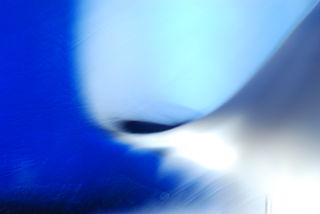
Abstract photography, sometimes called non-objective, experimental or conceptual photography, is a means of depicting a visual image that does not have an immediate association with the object world and that has been created through the use of photographic equipment, processes or materials. An abstract photograph may isolate a fragment of a natural scene in order to remove its inherent context from the viewer, it may be purposely staged to create a seemingly unreal appearance from real objects, or it may involve the use of color, light, shadow, texture, shape and/or form to convey a feeling, sensation or impression. The image may be produced using traditional photographic equipment like a camera, darkroom or computer, or it may be created without using a camera by directly manipulating film, paper or other photographic media, including digital presentations.
References
- ↑ Bradley, Molly (November 30, 2014). "Molly Bradley, "Interview with Harvey Lloyd," Carbon Culture, (November 2014)". Carbon Culture. Retrieved June 16, 2016.
- ↑ "Harvey Lloyd". Photoimaging Information Council. 2005. Archived from the original on January 4, 2016. Retrieved June 16, 2016.
- ↑ Bradley Interview
- ↑ Photoimaging Information Council
- ↑ Heard Museum (1986). Our Voices, Our Land. Flagstaff: Northland Press. pp. 149–153.
- ↑ Email communication between Letitia Chambers and Harvey Lloyd, December 9, 2010.